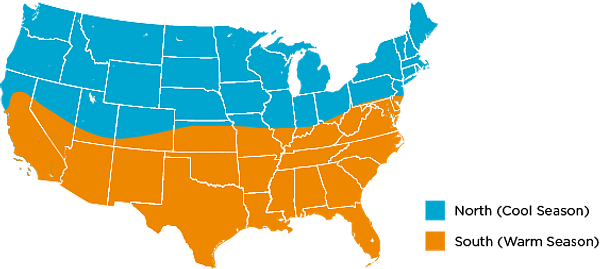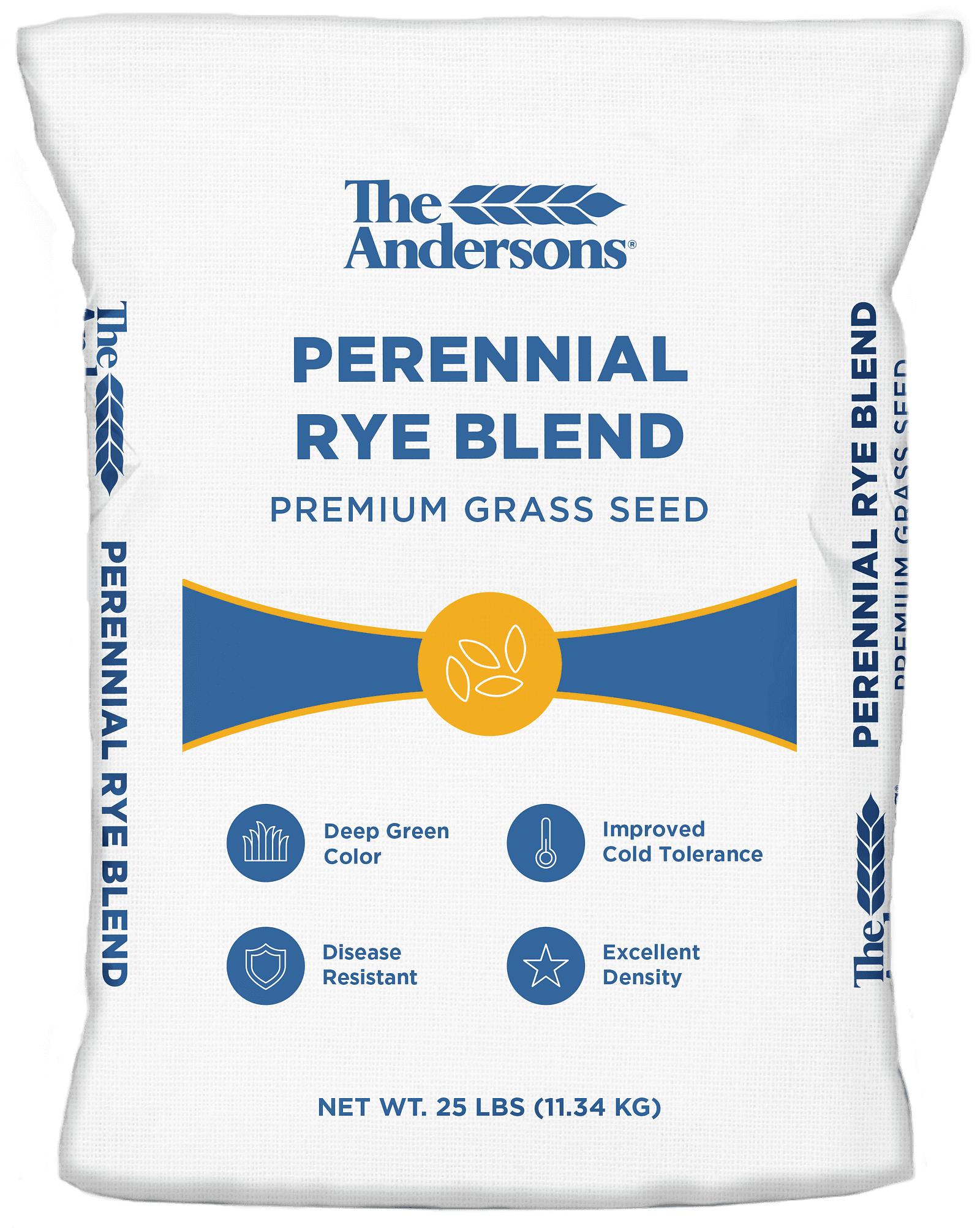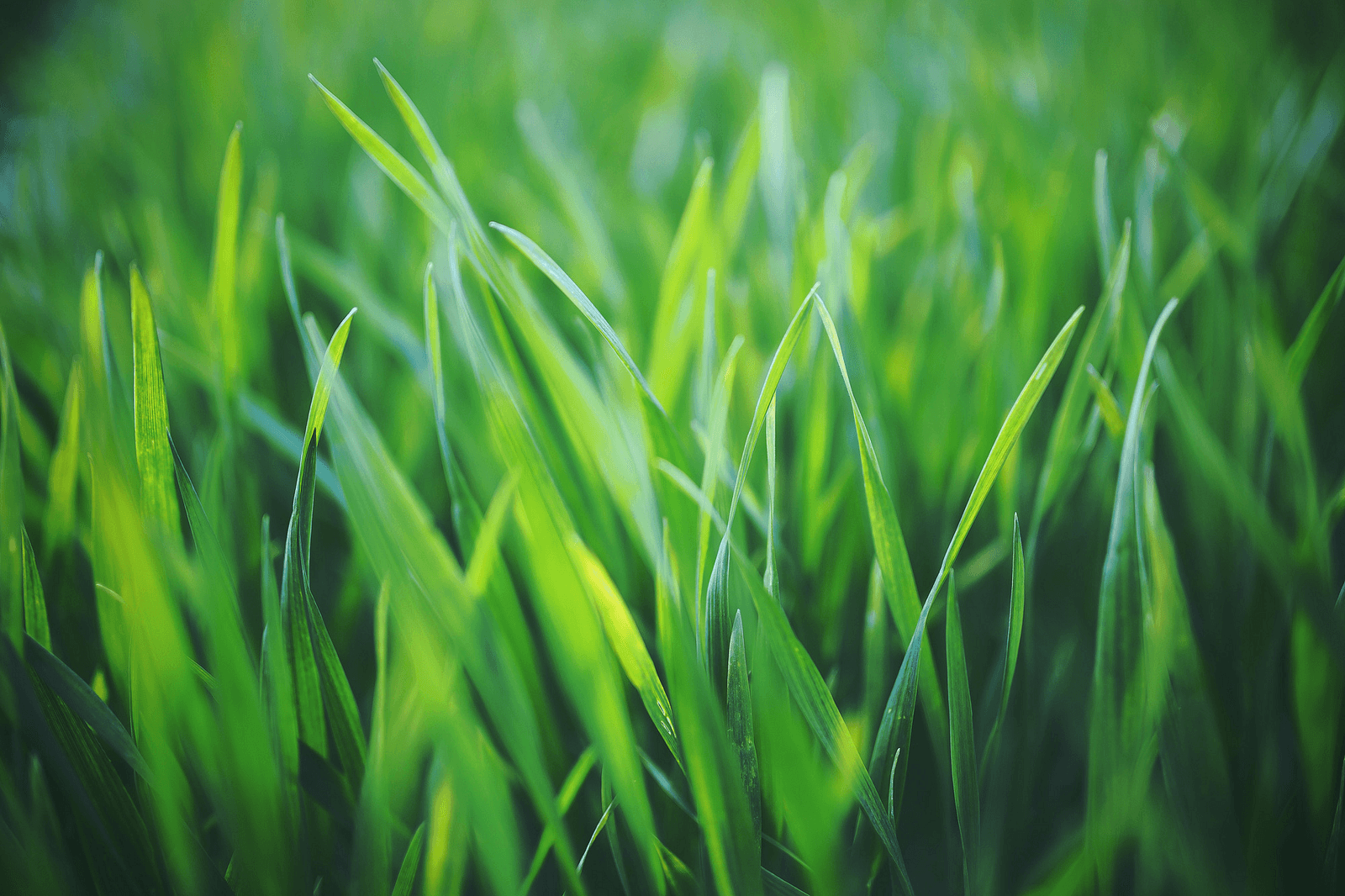A beautiful lawn begins with high-quality seed! Each lawn starts with small yet powerful seeds that develop into lush, healthy grass. While establishing a new lawn might feel daunting, we’re here to simplify the process by providing you with all the essentials to create the lawn you've always wanted with 7 easy steps.
1. Identify the Ideal Time for Seeding
To successfully plant grass seed, the first step is to decide on the right timing. It’s essential to seed when the soil temperature is in the ideal range of between 50ºF and 70ºF. Planting when it's too cold or too hot can negatively affect the seeds' ability to germinate. Additionally, consider the weather conditions; aim for a time when temperatures are mild and there is adequate rainfall or moisture.
For cool-season grasses, the fall is the best time to seed, typically in mid-August through October. However, this can vary based on weather conditions, so it’s important to check and go by the soil temperature before seeding. The temperatures in the spring between mid-March and May can also provide the appropriate conditions for planting grass seed. Warm-season grasses thrive when seeded in late spring to early summer, taking advantage of warmer temperatures and plenty of sunlight for optimal growth.

2. Determine Coverage Area
Understanding the amount of grass seed required for your lawn is crucial. Before you head out to buy, measure the square footage of your yard. Generally, you’ll need around one to five pounds of grass seed for every 1,000 square feet. However, it’s important to note that not all seed bags offer the same coverage, even if they have the same weight, so make sure to review the specific guidelines on the product label.

3. Select the Right Grass Seed
Choosing the right grass seed can feel overwhelming due to the many options available. When making your choice, take into account several factors: your local climate, the specific location of your lawn, the amount of sunlight it receives, and the expected foot traffic in the area you intend to seed.
Warm-season grasses thrive in southern climates characterized by hot summers and mild winters, and they typically need more sunlight than cool-season grasses. In contrast, cool-season grasses are better suited for northern regions, where winters are colder and summers are generally mild to warm.
The quality of the grass seed you select is vital, as it significantly affects the health and appearance of your lawn. Opt for a high-quality seed varieties, such as Stadium Mix Kentucky Bluegrass, Perennial Rye Blend or Rio Bermuda, known for their heat and drought tolerance, disease resistance, and rich dark green color.

4. Prep the Soil
Taking care of your soil's health is crucial for long-term success. Start by testing your soil with a soil test to ensure it's pH is between 5.8 and 7. Soil that has a too low or too high of pH can create an unideal environment for healthy grass growth. Consider using soil amendments like NutraLime OP or Elemental Sulfur pH Down to adjust soil PH, or NutraSoft OP, which helps loosen compacted soil. Any of these products can be used at the same time as seeding or other lawn care product applications.
Next, you will want to start prepping the soil by removing any rocks or debris. You should also make sure the lawn is level by filling in any holes or low spots with top soil. You should have a bare and even area for the new grass seeds.
Lastly, apply soil amendment BioChar DG™ to help improve microbial activity in the soil and improve seed germination.

5. Spread the Seed and Apply Fertilizer
Use a spreader and adjust it according to the settings provided on the back of your seed bag. Start by spreading the seed around the edges of your lawn. After that, distribute half of the seed in one direction and the rest in the opposite direction, ensuring that you slightly overlap each pass. For instance, you might first spread from north to south, and then from east to west.
After spreading the seed, gently rake the area to ensure that all seeds are adequately covered, but avoid burying them deeper than ¼ inch.
Applying a starter fertilizer while planting your grass seed will provide your seedlings with essential nutrients for strong root development and healthy growth. Be sure to carefully follow the instructions on the fertilizer package and choose a product that is suitable for seeding projects, such as New Lawn Starter 20-27-5, EcoFusion™ Starter 16-21-4, or 10-10-10 Fertilizer with Humic DG™.

6. Keep Seeds Moist
Keeping seeds moist is crucial for successful germination when planting new grass seed. After spreading the seed, water the area gently but thoroughly to settle the seeds into the soil; using a fine spray or a hose with a nozzle can help avoid displacing them. In the weeks that follow, it’s important to water lightly and frequently—usually once or twice a day—depending on weather conditions, aiming to keep the top inch of soil consistently moist without overwatering. Use irrigation in the morning and evening to avoid the full sun and heat of the day from drying out the area too fast.
Using a soaker hose or a gentle sprinkler system can also help distribute water evenly, maintaining moisture levels without flooding the area. Applying a thin layer of straw or mulch can further assist in retaining moisture and preventing evaporation, while ensuring that it isn’t too thick so that sunlight can reach the seeds. Monitoring weather conditions is essential; if it rains, you may need to adjust your watering schedule. Additionally, avoid foot traffic on the newly seeded area to prevent disturbing the seeds and soil structure, which can lead to moisture loss. If your soil is sandy and drains quickly, be prepared to water more often than if you have heavier soils that retain moisture better. By following these strategies, you can ensure that your grass seeds stay moist and have the best chance for successful germination and growth.
You should continue keeping the seeded area moist until your seedlings reach 3 inches tall. The amount of time this takes can vary depending on the grass type you seeded with. For example, the Perennial Rye Blend takes about 7 to 14 days to germinate while the Stadium Mix Kentucky Bluegrass can take up to 3 weeks to start germinating.
Once your grass reaches 3 inches in height, you may reduce the watering frequency to 2-3 times each week for a total of at least 1 inch of water per week, including rainfall.

7. Upkeep your Lawn
Once your new seedlings reach the height of at least 3 inches, you may mow them for the first time. You should never take off more than ⅓ of the grass blades when mowing, especially the first time they are cut.
Maintain your lawn's appearance with regular fertilizer applications, treat common lawn problems as they arise, water regularly and avoid excess traffic.
Finally, establish a regular mowing and watering schedule, avoid excess traffic on your lawn, as well as identify and treat common lawn problems.

Conclusion
Successfully planting grass seed involves careful preparation and attention to detail, but the rewards are well worth the effort. By choosing the right seed for your climate, accurately measuring your lawn, and following proper planting and watering techniques, you can establish a lush, green lawn that enhances your outdoor space. Remember to maintain consistent moisture, use high-quality fertilizers, and monitor the growth of your new grass to ensure it thrives. With patience and dedication, you'll enjoy the beauty and benefits of a healthy lawn for years to come. Happy planting!
IMPORTANT: Do not seed if you plan on applying a pre-emergent! Pre-emergent will inhibit new grass growth.





